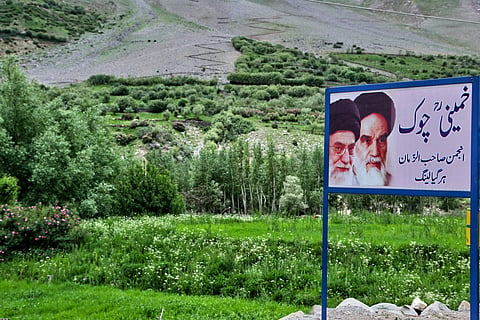Sign with an image of Ayatollah Khomeini in the Nun Kun Village of India-administered Ladakh from 2014. (This featured image was added online in 2024, and did not appear in the original print publication.)IMAGO / NurPhoto
Cover
Ladakhi balti
The world differentiates between the two populations of the Ladakh region of India´s extreme north – one Muslim, the other Buddhist — in interesting ways. Outsiders, be they from New Delhi or New York, tend to regard Leh as a place populated by pleasant people with a Buddhistic culture worth preserving; the Shias of Kargil, on the other hand, are regarded and treated as backward, conservative, ignorant, and even evil.
Indeed, Ladakh´s Buddhists have been quite successful in drawing attention to themselves as a small minority precariously positioned on the borders of India. Meanwhile, the Muslim population of Kargil has long escaped attention even though their living conditions are worse.

